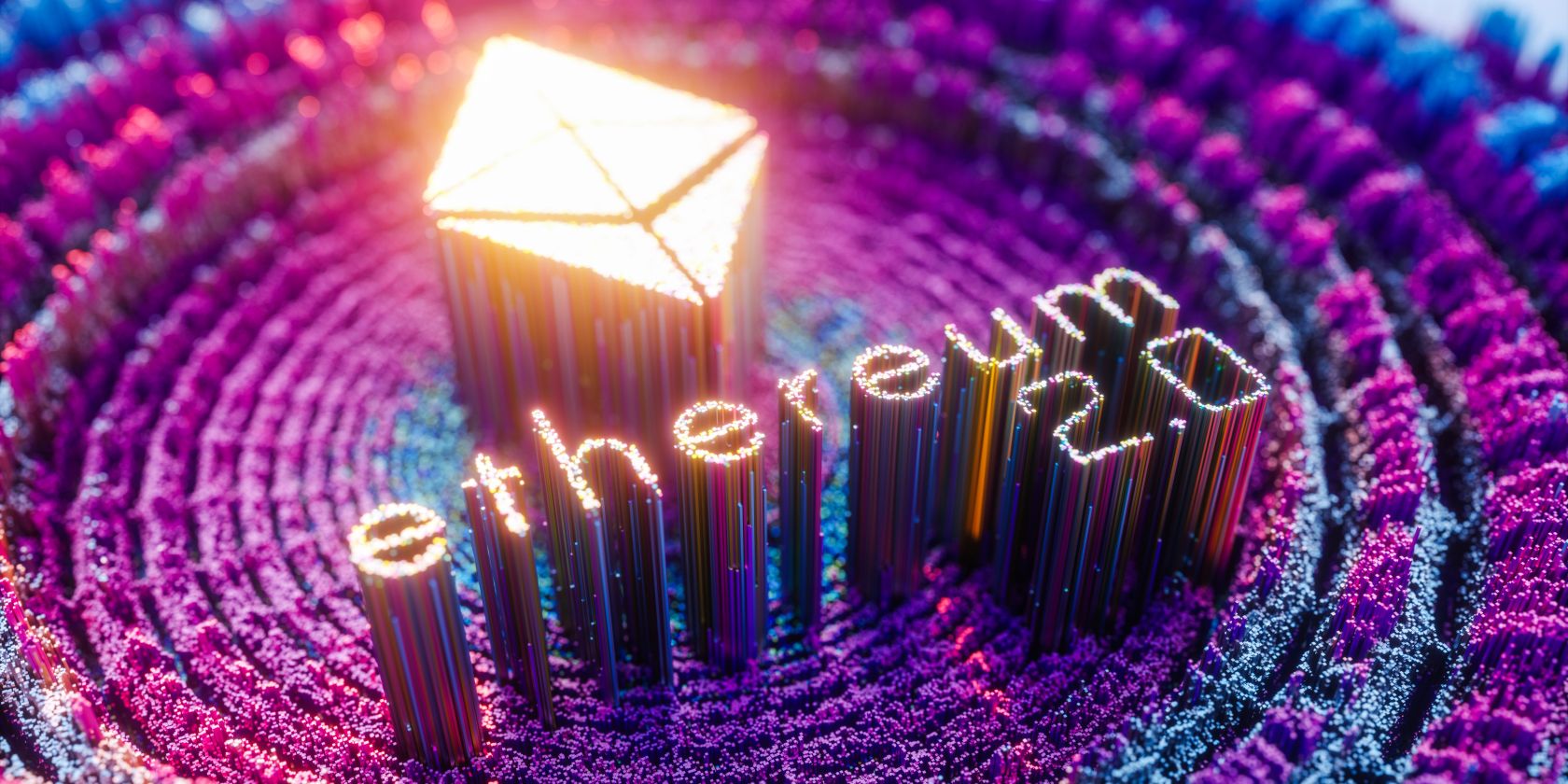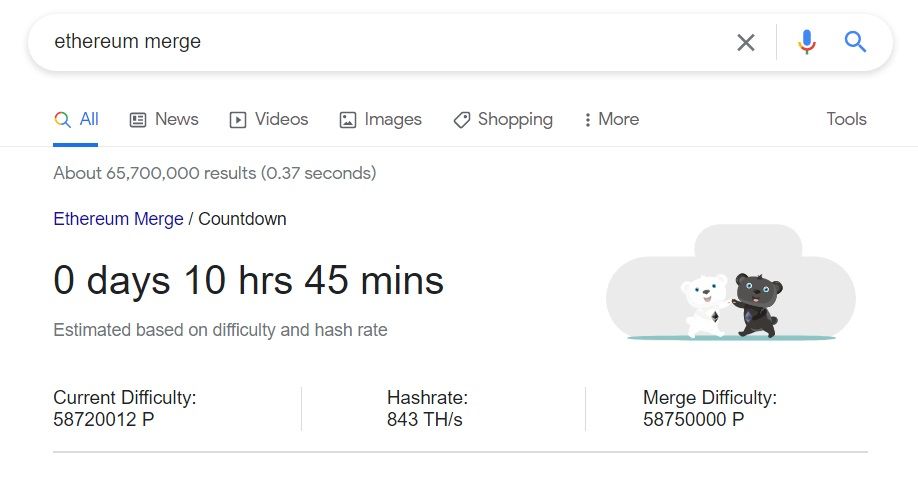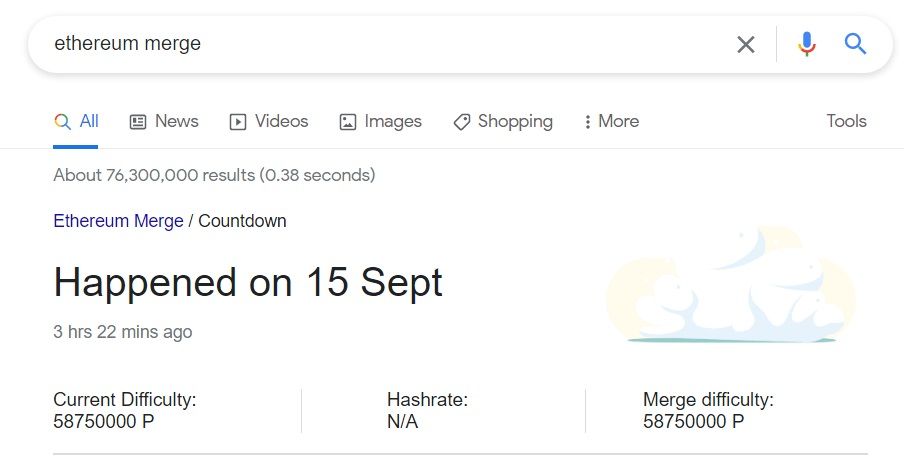The Ethereum Merge is the official merging of Ethereum's proof-of-work blockchain to its new proof-of-stake Beacon Chain, shifting the world's second-most popular cryptocurrency to a more efficient and environmentally friendly proof-of-stake model.
Ethereum 2.0, as the new version of Ethereum is widely-referred to, has been a long time in the making and will catapult the blockchain forward, directly addressing some of Ethereum's main issues—but not as many as you might think.
There's heaps to take in when it comes to Ethereum 2.0 and the Merge, and this is how you make sense of it all.
What Is the Ethereum Merge? Why Is Ethereum Merging?
Like Bitcoin, Ethereum has long used a proof-of-work consensus model. Proof-of-work requires crypto miners to provide phenomenal amounts of computational power to match the complex hashes (an alphanumeric string) that link each block in the Ethereum blockchain. The more hardware processing power on the network, the more difficult it becomes to find the hash, leading crypto miners to build bigger and more powerful mining rigs in the quest to mine the next block.
At the time of writing, the Ethereum network consumes over 110TWh of energy per year—more than the entirety of the Netherlands. The only other blockchain to consume more power is Bitcoin, which consumes more than 150TWh. YouTube, on the other hand, consumes more than 240TWh of energy per year, while PayPal uses around 0.25TWh.
After the switch to proof of stake, the new Ethereum Beacon Chain will consume 99.9% less energy. As gratuitous energy waste is one of the main criticisms of cryptocurrency in general and specifically NFTs (many of which are minted on the Ethereum blockchain), that the Merge will tackle one of the biggest consumers is likely to go down well across the board.
When Is the Ethereum Merge Happening?
The Ethereum Merge will take place on 15 September 2022 and will come into effect once the Ethereum blockchain reaches the cumulative difficulty, known as the Total Terminal Difficulty (TTD), of 58,750,000,000,000,000,000,000.
At its most basic, crypto mining difficulty is exactly how it sounds. How hard is it for mining hardware to find the matching hash for the next block? A blockchain automatically updates mining difficulty periodically, adjusting to the amount of computer processing power currently attempting to verify transactions.
Thus, TTD is the total difficulty of all blocks ever mined on the Ethereum blockchain. When it hits that figure, the Ethereum 2.0 Merge will proceed.
So, if you arrive at this article after 15 September 2022, know that it is highly likely the Ethereum Merge is complete.
Will Ethereum 2.0 Be Faster Than Ethereum 1.0?
Energy consumption isn't the only issue Ethereum 2.0 aims to solve. Like Bitcoin, Ethereum's transaction confirmation speeds are relatively slow in the world of crypto, taking up to five minutes to confirm around 20 transactions (still much faster than Bitcoin's 10-15 minutes).
After the Merge, it is thought that confirmation speed will increase—though not by much.
That's because although a proof of stake network typically processes transactions much faster than a proof of work network, after the Merge, Ethereum 2.0 will still only release new blocks in roughly 12-second intervals, shaving just two seconds from the Ethereum 1.0 block speed.
So, for those hoping that Ethereum 2.0 will suddenly turn Ethereum transactions into something comparable to Nano, think again.
Will Ethereum Gas Fees Decrease After the Merge?
Unfortunately not. Although gas fees are one of Ethereum's main issues, the proof of stake Beacon Chain won't reduce Ethereum's gas fees.
Now, there are ways to reduce your Ethereum gas fees, and using Ethereum layer 2 solutions like Polygon, Loopring, and Arbitrum can also make a difference. However, it won't be until Ethereum 2.0 implements blockchain sharding that users see a reduction in on-chain gas fees.
Is Ethereum 2.0 a New Cryptocurrency?
No, Ethereum 2.0 is still Ethereum. The difference is that Ethereum 2.0 will use a proof of stake blockchain instead of Ethereum's former proof of work blockchain.
Furthermore, although the Ethereum 2.0 proof of stake blockchain is "new," the Beacon Chain has been up and running since 2020, with the Ethereum development team upgrading and adjusting the new network.
Will Ethereum's Price Rise After the Merge?
In truth, no one knows. Directly after the Merge completes, how Ethereum's price will react is anyone's guess. Of course, that hasn't stopped traders from taking out long and short positions against Ethereum's prospective price, but with Ethereum 2.0 being such a shift from its existing blockchain structure, the outcome is unclear.
There are a couple of things to consider when attempting to guess if Ethereum's price will rise after the Merge.
First, know that the Ethereum block reward is dropping:
- Ethereum 1.0 issued around 13,000 new Ether per day.
- Ethereum 2.0 will issue around 1,600 new Ether per day.
The significant reduction in new Ether entering the Ethereum ecosystem will slow inflationary growth, which, in turn, could see the Ethereum price increase.
Second, know that although Ethereum is switching to proof of stake, and although the Ethereum 2.0 Merge is set for 15 September 2022, staking rewards won't immediately start flowing back to stakers. Staking rewards will accrue, but those with staked Ethereum won't receive their rewards until an update that most experts believe will arrive in around six months, if not 12 months (so, from March 2023 from the time of writing).
Can I Stake Ethereum After the Merge Completes?
Yes—with a but. And that "but" is that currently, to solo-stake on Ethereum, you need at least 32 ETH, a fair old whack of cryptocurrency. Those who stake a whole 32 ETH become network validators, helping to run and secure the Ethereum network by processing transactions. Currently, there are around 420,000 validators.
Now, if you don't have 32 ETH lying around, you can always join an Ethereum staking pool, which is what the majority of people will do. The rub is that if you join an Ethereum staking pool, you'll share any rewards with your fellow stakers. But it's potentially better than nothing.
Can the Ethereum Merge Fail?
As with all things in life, nothing is 100 percent certain, and this applies to the Ethereum Merge. However, while the Ethereum Merge could fail, it is thought the chances of this happening are extremely small.
That said, this is the first time a blockchain has switched from proof of work to proof of stake, and although the Ethereum development team has been working on the Merge for two years (and laying the groundwork for it even before that), the chance of failure is definitely non-zero.
Prior to the official Merge, countless tests have been conducted on the Beacon Chain in preparation for the change, but who knows what the actual event might throw up.
Do Current Ethereum Users Need to Do Anything?
No, not really. If you're already holding Ethereum in a wallet, you just need to sit back and wait for the Merge to complete. Crypto exchanges and wallets advise that there will be a period where your Ethereum will be unavailable for understandable reasons but that regular functionality like sending and buying Ethereum should resume reasonably quickly.
The transition to Ethereum 2.0 will happen instantaneously once the TTD (see above) is hit. From that moment, Ethereum switches to proof of stake, and history is made.
Are You Ready for the Ethereum Merge?
Whether you're ready or not, the Ethereum Merge is set to complete on 15 September 2022. As mentioned above, the transition is instantaneous, though it could take up to a year before staking rewards are fully enabled and returning an Ethereum staking yield to users.
Whether you're staking Ethereum or not, it's a momentous occasion.



